Past Life Love & Story: Soul Plan, Spirit Being & Geographic Memory Turkish Reincarnation Case of Abit Suzulmus | Ismail Altunkalic
- CATEGORY
How Derived: Memories in Childhood
Researchers: R. Bayer and Ian Stevenson, MD
Article by: Walter Semkiw, MD
The Murder of a Farmer and his Pregnant Wife
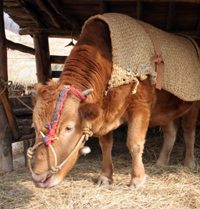 Abit Suzulmus lived in Adana, Turkey, in the Bey district. His exact date of birth is unknown, but it is thought that he was born around 1912. He grew fruits and vegetables and he did well enough to own two houses. He was also able to hire others to help him work his land.
Abit Suzulmus lived in Adana, Turkey, in the Bey district. His exact date of birth is unknown, but it is thought that he was born around 1912. He grew fruits and vegetables and he did well enough to own two houses. He was also able to hire others to help him work his land.
Abit married twice. His first wife, Hatice, did not bear children, so he took a second wife, Sehide, who had five children with him. Abit had his two wives live separately in his two houses. The houses were 350 meters apart.
On January 31, 1957, Abit, at his home where Sehide lived, was told by one of his employees that one of his farm animals was sick. Sehide was nine months pregnant at the time and was starting to go into labor. Abit went with the employee to the stable to tend to the animal. As Abit leaned down to examine the animal, he was struck in the head with a heavy hammer. Abit was killed by this blow to the head when he was about 45 years old.
 When he failed to return to the house, Sehide went to the stable to see what was delaying Abit. Sehide was then also murdered with the hammer, as where their children, Zihni and Ismet.
When he failed to return to the house, Sehide went to the stable to see what was delaying Abit. Sehide was then also murdered with the hammer, as where their children, Zihni and Ismet.
Several people were arrested in connection with these crimes but only two, known as Ramazan and Mustafa, were convicted of the murders. They were eventually hanged.
Spirit Being & Soul Plan: An Announcing Dream of Abit Returning
Mehmet Altinkilc and his wife, Nebihe, lived in the Midik section of Adana, Turkey. A neighbor, Fatma Tanrisven, who lived a few hundred meters or yards from the Altinkilc family, had a dream that involved the Altinkilcs.
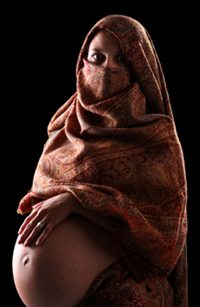 In Fatma’s dream, Abit Suzulmus, the man who was murdered in Adana along with his wife and two children, was sitting in the home of Mehmet Altinkilc. Three men walking along the road outside the Altinkilc home called out to Abit and asked him to come out of the house. Abit replied:
In Fatma’s dream, Abit Suzulmus, the man who was murdered in Adana along with his wife and two children, was sitting in the home of Mehmet Altinkilc. Three men walking along the road outside the Altinkilc home called out to Abit and asked him to come out of the house. Abit replied:
“No, I am going to stay here, I will not come back.” (1)
Fatma told her husband, Mahmut, about the dream and the next day he went to the home of Mehmet Altinkilc to share the dream with him. It turned out that Nebihe, Mehmet’s wife, was pregnant. Neither Fatma or Mahmut knew that Nebihe was expecting a child.
Once Mahmut learned that Nebihe was pregnant, he interpreted his wife’s dream to mean that Nebihe’s child would be a boy and that he would be Abit Suzulmus reincarnated. Mahmut told Mehmet and Nebihe Altinkilc about his wife’s dream and his prediction that Abit would be born to them.
Mehmet knew who Abit Suzulmus was, not only from the publicity that resulted from the murders, but also because Mehmet and Abit had some business dealings in the past. To Mehmet, though, Abit was just an acquaintance, not a friend. During the investigation of this reincarnation case, Mehmet stated that he did not know personal details of Abit’s life. For example, Mehmet stated that he did not know the names of Abit’s children or other family members.
Validation of Ismail Altinkilic’s Past Life Memories
Nebihe Altinkilic did have a son who was born on September 30, 1957, nine months after Abit Suzulmus was murdered. Mehmet and Nebihe named him Ismail. When he was one and a half years old, just after he started talking and walking, Ismail started to speak about his past lifetime as Abit Suzulmus.
Before Ismail’s many past life memories are shared, let me explain that Ian Stevenson methodically validated these statements as being historically correct. In his book, Cases of the Reincarnation Type: Lebanon and Turkey, Stevenson presents an extensive, 15 page table in which he identifies which witnesses or other objective sources, such as police records, that were used to validate Ismail’s memories. (2)
Past Life Memories: Ismail Speaks of his Life and Murder as Abit Suzulmus
Mehmet, Ismail’s father, related that as soon as Ismail was able to speak fluently, he spoke of his past lifetime as Abit Suzulmus. R. Bayer, who was a colleague of Ian Stevenson, tape-recorded Mehmet’s description of the turn of events. A portion of the transcription is provided below:
“One evening I had come in from work very tired and had stretched out on a sofa. Ismail was sitting beside me and came over and sat on me. Being very tired, I said, in order to get rid of him:
‘Ismail, I am terribly tired. Go away.’
He replied:
‘No, no. I am not Ismail. I am Abit.’
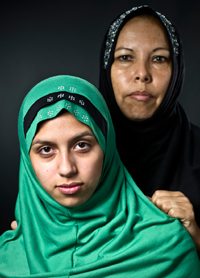 …I became annoyed at this absurdity and tried again to send him away, scolding him. But he insisted he was Abit. So then I asked him whether he died married or a bachelor.
…I became annoyed at this absurdity and tried again to send him away, scolding him. But he insisted he was Abit. So then I asked him whether he died married or a bachelor.
[He replied:]
‘But Papa, I have two wives. One is called Hatice and the other Sehide.’
[So I said:]
‘Have you any children, my boy?’
And he replied:
‘Yes, Papa. Yes, yes. Gulseren, Zeki and Hikmet.’
He also said that he was owed debts by various persons, mentioning Saban, Abdurrezzak, and another person of Akkapi [another district of Adana]. He also complained of our poverty, and added the he hoped that debtors would pay up.” (3)
Ismail also described to his father how Abit was murdered. Ismail said that Ramazan had told him that an ox was lame, which is why he, Abit went to the stable.
 When Abit leaned over to examine the ox, Ramazan killed him by hitting him over the head with a bar of iron that was shaped as a hammer. Ismail used his fingers to show his father what the hammer looked like.
When Abit leaned over to examine the ox, Ramazan killed him by hitting him over the head with a bar of iron that was shaped as a hammer. Ismail used his fingers to show his father what the hammer looked like.
Ismail explained to his father that as Abit, he had two wives, as his first wife could not bear children. He also said that his wife Sehide was very beautiful. He said that he worked as a vegetable farmer and that in his garden, he had fruit trees, including orange and quince trees.
Ismail said that as Abit he had cows and that one cow was named “Susan.” He said that in his past incarnation he had two horses. In the stable, Ismail said that he had a fodder barrel and that he has placed a bed in the stable. Ian Stevenson was able to verify that all these past life memories were correct.
Geographic Past Life Memory: Ismail finds his Past Life Home
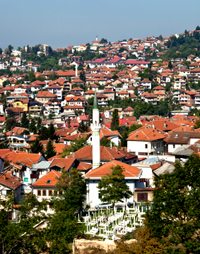 Ismail continued to insist that his name was Abit and he demanded that he be taken to Abit’s home and family. Abit’s family heard about Ismail’s claims and Abit’s surviving wife, Hatice, and his daughter, Gulseren, came to visit him at the home of Mehmet and Nebihe. Ismail developed very strong emotional bonds to them.
Ismail continued to insist that his name was Abit and he demanded that he be taken to Abit’s home and family. Abit’s family heard about Ismail’s claims and Abit’s surviving wife, Hatice, and his daughter, Gulseren, came to visit him at the home of Mehmet and Nebihe. Ismail developed very strong emotional bonds to them.
When Ismail was three years old, Mehmet decided to see if Ismail could find the home of Abit. Recall that Abit lived in the Bey district of Adana and Mehmet and his family lived in the Midik district. The distance between the Bey and Midik districts is about 2 kilometers or a little over one mile.
Though Abit had two homes, Ismail correctly led the way over a distance of 2 kilometers directly to the house where Abit was murdered, even though Ismail in his contemporary lifetime had never been to Abit’s homes. There, he recognized people that Abit knew and recognized places related to Abit.
This is reminiscent of the Anne Frank | Barbro Karlen case, as Barbro, at 10 years of age, was able to lead her parents from their hotel through the winding streets of Amsterdam directly to the Anne Frank House, though she had never been to Amsterdam before. The Frank | Karlen case also shows that facial features can remain consistent from one lifetime to another, and that religion, nationality and ethnic affiliation can change from one incarnation to another.
Past Life Memories: Uncle Mahmut gets Goose Bumps when Ismail describes their Drinking Parties with Women
 Ismail told his father that as Abit, he liked to drink raki, which is a strong alcoholic drink made in Turkey, and that he liked to drink raki with his friends. He identified one drinking buddy as being Abdurrezzak, which was true. Abdurrezzak Baydar did indeed drink raki with Abit.
Ismail told his father that as Abit, he liked to drink raki, which is a strong alcoholic drink made in Turkey, and that he liked to drink raki with his friends. He identified one drinking buddy as being Abdurrezzak, which was true. Abdurrezzak Baydar did indeed drink raki with Abit.
He also said that he would drink raki every night with his uncle, whose name was Mahmut Altinkilic. Ismail explained that he, as Abit, and his Uncle Mahmut worked the fruit and vegetable fields together. In addition, they jointly owned a garden and that they would have drinking parties in. Ismail noted that when he and Mahmut would drink, they would snack on sama.
Further, Ismail said that he, as Abit, and Uncle Mahmut would invite women to their drinking parties.
When Mahmut Altinkilic heard Abit describe that they had women over for the parties, he said he developed goose bumps. Mahmut explained that he was sure that no one other than Abit and he knew about the women that they invited to their parties in the garden. It was this very personal secret that Ismail knew, which could not be explained except by Ismail being the reincarnation of Abit, that made Mahmut’s flesh react in this way.
Past Life Memories: Ismail Remembers People Who owed him Money in his Prior Lifetime as Abit
Ismail told his father that at the time that he died as Abit, that several individuals owed him money. He said that two of the people who owed him money were named Abdurezzak and Sabit.
Abdurezzak Baydar admitted that at the time of Abit’s death, he owed Abit 200 Turkish lira and Sabit Devici stated that he owed 200-300 Turkish lira to Abit when he died. Again, Ismail’s memories were correct.
When Sabit Devici learned about Ismail’s claim to be the reincarnation of Abit, Sabit sought him out. Sabit had never met Ismail before and Ismail, in his contemporary incarnation, had never met Sabit. Sabit first met Ismail when Ismail was without his mother, father or others who could have identified Sabit. Sabit asked Ismail who he was and Ismail replied, “Sabit.” (4)
Past Life Memories: Ismail Spontaneously Recognizes his Past Life Friend, Rasit, the Ice Cream Seller
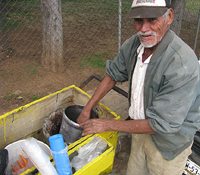 When Ismail was about three years old, he spontaneously recognized and identified by name Rasit Tathci, an ice cream vender, as Rasit walked by. Ismail went to Rasit and not only identified Rasit, but he also told Rasit the names of his wife and several children. Rasit was impressed with Ismail’s recognition of him as Rasit lived in the Bey district, while Ismail saw him in the Medik district, where he sold ice cream. Rasit didn’t think anyone knew him in the Medik district.
When Ismail was about three years old, he spontaneously recognized and identified by name Rasit Tathci, an ice cream vender, as Rasit walked by. Ismail went to Rasit and not only identified Rasit, but he also told Rasit the names of his wife and several children. Rasit was impressed with Ismail’s recognition of him as Rasit lived in the Bey district, while Ismail saw him in the Medik district, where he sold ice cream. Rasit didn’t think anyone knew him in the Medik district.
Ismail also referred to Rasit as a “kirve.” This has significance as Abit was a close friend of Rasit and was to serve as the “kirve,” or sponsor, of the circumcision ceremony for Rasit’s son. In calling Rasit a kirve, Ismail appears to have gotten the roles reversed when Abit was alive, but still, he was accurate in identifying Rasit by name and referring to a role that had significance to Rasit and his past life friend, Abit.
Ismail was also able to spontaneously identify Rasit’s son, Ali Tathci. Upon seeing this man, Ismail said:
“That man is called Ali, and I worked with him.” (5)
Ali worked with his father selling ice cream, but he also had worked for Abit in his vegetable and fruit fields.
Past Life Memories: Ismail Recognizes Abit’s Chair and Accurately Admits a Debt
Abit regularly visited a shop owned by brothers whose family name was Kapiciobul. As Abit visited the shop on a daily basis, he complained that there was no chair for him. In response, a chair was brought in specifically for Abit, for him to sit in when he visited the shop.
When the Kapiciobul brothers had heard about Ismail’s claims to be the reincarnation of Abit Suzulmus, they sent word to Ismail’s father to bring him to the shop, so that they could meet him.
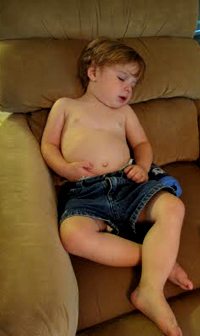 When Ismail was brought to the shop, he went directly to the chair that was reserved for Abit. When he was asked why he sat in that chair, Ismail responded that he had sat there often and that the chair belonged to him.
When Ismail was brought to the shop, he went directly to the chair that was reserved for Abit. When he was asked why he sat in that chair, Ismail responded that he had sat there often and that the chair belonged to him.
To test Ismail, one of the brothers named Ibrahim asked Ismail:
“Do I owe you money?” Ismail replied, “No, on the contrary, I owe you 100 lira.” (6)
Ismail’s statement was correct. Abit had owed the Kapiciobul brothers 100 lira.
Ismail’s Attachment to his Past Life Identity of Abit Suzulmus
As a child, Ismail insisted that his family call him Abit. When he was six years old and it was time to enroll in school, he demanded that he be registered as Abit Altunkalic, a demand that his father agreed to.
When he was seven years old, at the time when Ian Stevenson first met him, Ismail still would not respond to anyone unless he was addressed as Abit. Even in adulthood, Ismail was attached to the name and when Ian Stevenson met Ismail in 1973, when he was 16 years old, he showed Stevenson his identity card, in which his first name was listed as Abit.
Ismail’s attachment to the name Abit is reminiscent of the case of Francesco Foscari | Wayne Peterson. As a young child, Wayne refused to respond to his name Wayne. When his parents asked what he wanted to be called, he declared that his name was Francesco Foscari, though he had no idea where he got that name from. As an adolescent, Wayne even considered to legally change his name to Francesco Foscari. It took several decades for Wayne to realize that in a past lifetime, he was Francesco Foscari.
Past Life Emotions: Ismail’s Love for the Family of Abit Suzulmus
Ian Stevenson noted that Ismail had an intense and enduring attachment to Abit’s family. When Ismail saw a good cut of meat in his father’s butcher shop, he asked his father to prepare it and sent it to Abit’s children. When his father refused, Ismail wept for hours and would not eat. His father finally gave in and took the meat to the Suzulmus family. Ismail also asked his father to send watermelons to Abit’s family, which his father also resisted.
In 1964, when Ismail learned of the death of Abit’s mother, he cried and went to bed without dinner. When Abit’s son, Zeki, joined the military and left Adana, Ismail was upset as he was not informed or consulted in the matter.
Once, when Ismail was visiting the Suzulmus home, Abit’s daughter, Hekmit, was holding Ismail’s hand. He then told Hekmit that she was his daughter and that the house and garden belonged
to him.
During one period of his life, Ismail demanded to live with the Suzulmus family. Though this was not allowed, Ismail visited the Suzulmus family often and greatly enjoyed their time together. This is reminiscent of the Rashid Khaddege | Daniel Jurdi case, as Daniel would visit his past life family monthly. The Khaddege family even kept a cot or small bed for Daniel, so that he could sleep over on his visits.
Past Life Behaviors & Emotions: Ismail Demonstrates Behaviors Typical of Abit and Rejoices at the Hanging of Abit’s Murderer
 Abit Suzulmus had the habit of wearing a towel on his shoulder. Ismail spontaneously developed this same habit as a small child and continued to wear the towel on his shoulder until he was nine years old. Ismail’s father, Mehmet, pointed out that of the 18 children that he and his wife had, Ismail was the only one who demonstrated this trait.
Abit Suzulmus had the habit of wearing a towel on his shoulder. Ismail spontaneously developed this same habit as a small child and continued to wear the towel on his shoulder until he was nine years old. Ismail’s father, Mehmet, pointed out that of the 18 children that he and his wife had, Ismail was the only one who demonstrated this trait.
As noted before, Ismail recalled how he, as Abit, enjoyed drinking raki with his friends. As a child, Ismail was discovered to secretly drink raki.
When, after a long series of legal delays, Ramazan, the murderer of Abit was finally hanged, Ismail’s parents observed that he was very pleased and clapped his hands in joy.
Past Life Love & Emotions: Abit and Sehide are Reunited through Reincarnation
Recall that Sehide was Abit’s wife, who was murdered at the same time that Abit was killed. A young woman named Cevriye Bayri came forward and claimed to have memories of being Sehide.
Cevriye’s father, who knew of the Ismail’s claim to be the reincarnation of Abit, arranged for his daughter and Ismail to meet.
This was arranged at the Bayri’s home and when Ismail and Ceviye first saw one another, they ran to each other and hugged. Ismail said that he wanted to marry Ceviye and if he could not, he would die.
The Sehide Suzulmus | Ceviye Bayri reincarnation case is presented separately.
Principles of Reincarnation & Understanding Past Lives
Ian Stevenson pointed out that the Abit Suzulmus | Ismail Altunkalic case is one of the best documented of all Turkish reincarnation cases. This reincarnation case demonstrates the following features:
Soul Plan & Spirit Being Involvement: In an announcing dream, a neighbor of the Altunkalic family had a dream that was interpreted to mean that Abit Suzulmus would be reincarnated as the son of Nebihe Altunakalic, which appears to have indeed occurred. As such, it appears that the soul of Abit was able to communicate that he would be reborn nearby.
Geographic Past Life Memory: Ismail was able to lead his father directly to the home of Abit Suzulmus, where Abit and his wife, Sehide, were murdered. Ismail was only three years of age at the time that he showed the way to Abit’s home and he had not been shown the way before.
Family Relationships Renewed through Reincarnation: Sehide was Abit’s pregnant wife, who was murdered at the same time that Abit was. A young woman named Cevriye Bayri reported having memories of being Sehide. When Ismail and Cevriye first met, they embraced each other and Ismail expressed his desire to marry Cevriye. The reincarnation case of Sehide Suzulmus | Cevriye Bayri is presented separately.
Footnotes
1. Stevenson, Ian: Cases of the Reincarnation Type, Volume III, Twelve Cases in Lebanon and Turkey, University of Virginia Press, 1980, page 194
2. Stevenson, Ian: Cases of the Reincarnation Type, Volume III, Twelve Cases in Lebanon and Turkey, University of Virginia Press, 1980, pages 206-220
3. Stevenson, Ian: Cases of the Reincarnation Type, Volume III, Twelve Cases in Lebanon and Turkey, University of Virginia Press, 1980, page 195
4. Stevenson, Ian: Cases of the Reincarnation Type, Volume III, Twelve Cases in Lebanon and Turkey, University of Virginia Press, 1980, page 220
5. Stevenson, Ian: Cases of the Reincarnation Type. Volume III, Twelve Cases in Lebanon and Turkey, University of Virginia Press, 1980, page 217
6. Stevenson, Ian: Cases of the Reincarnation Type, Volume III, Twelve Cases in Lebanon and Turkey, University of Virginia Press, 1980, page 218